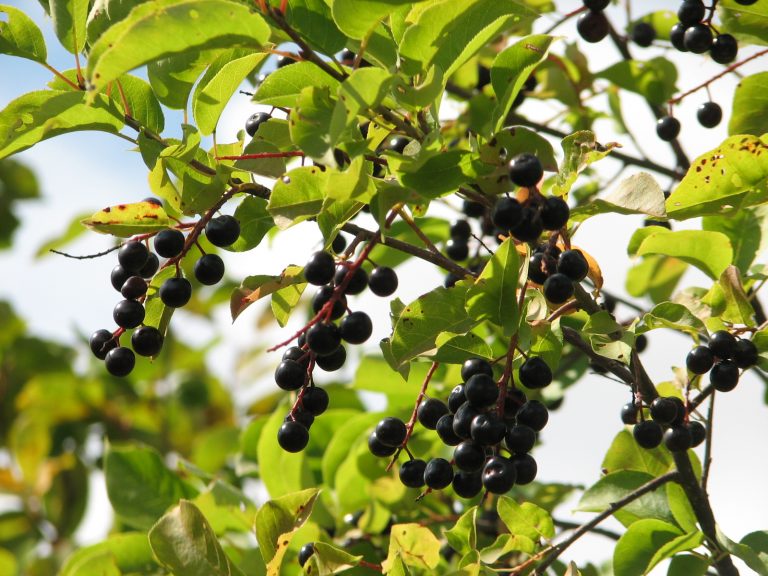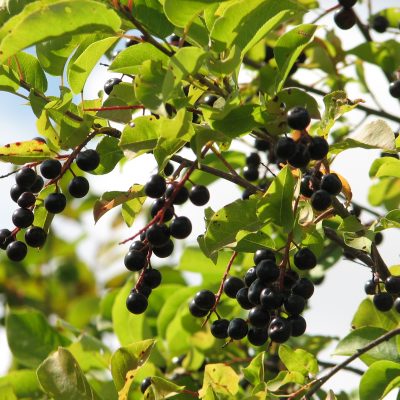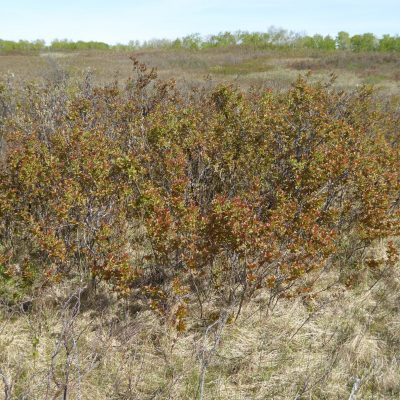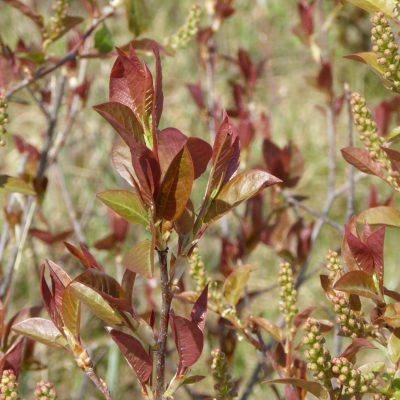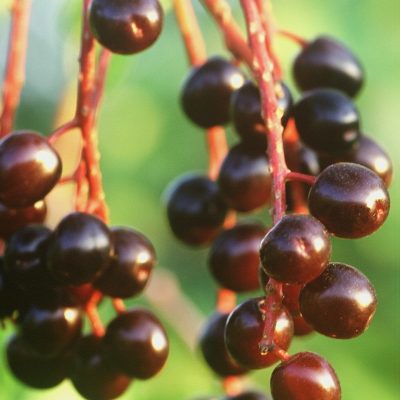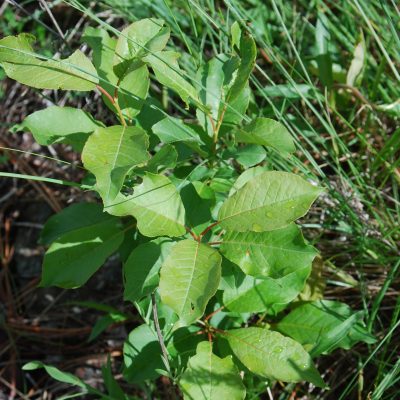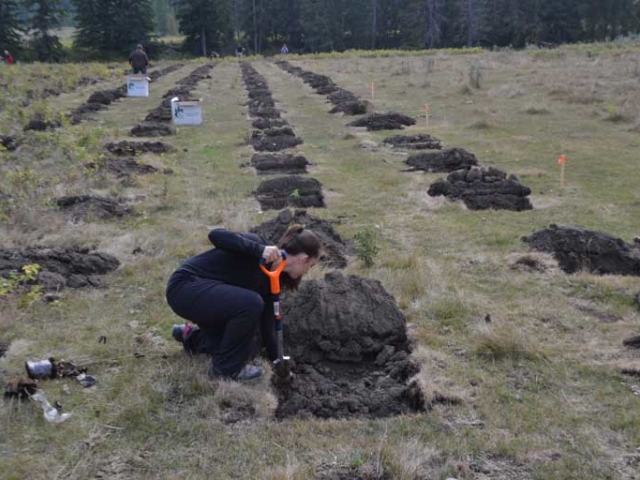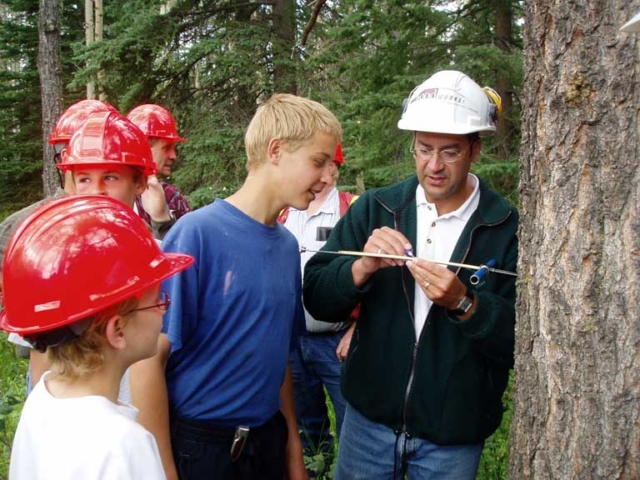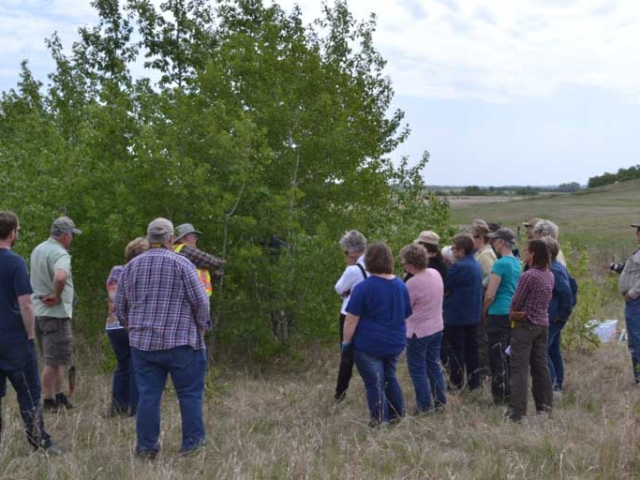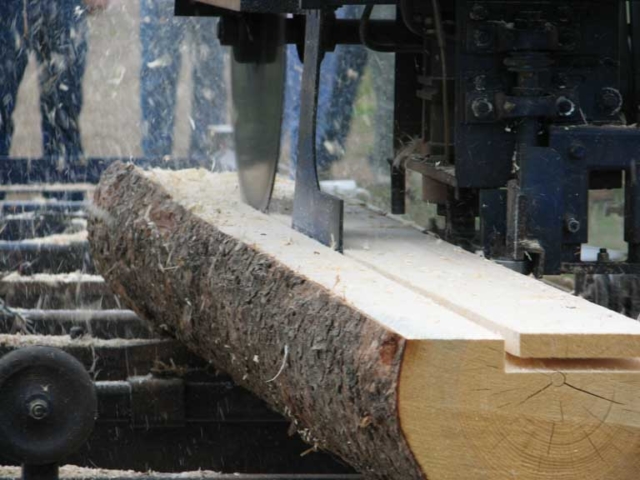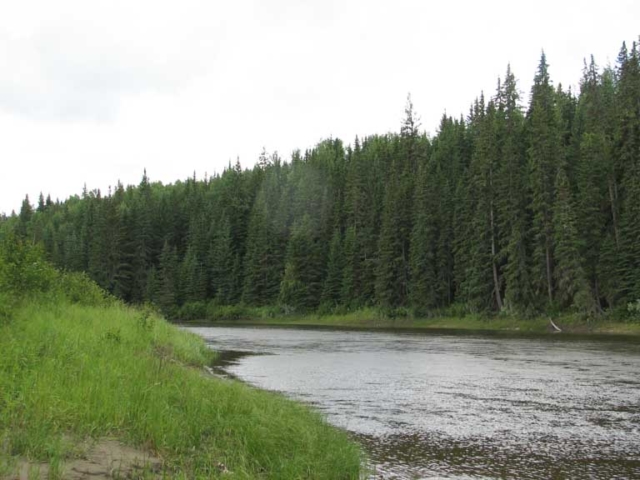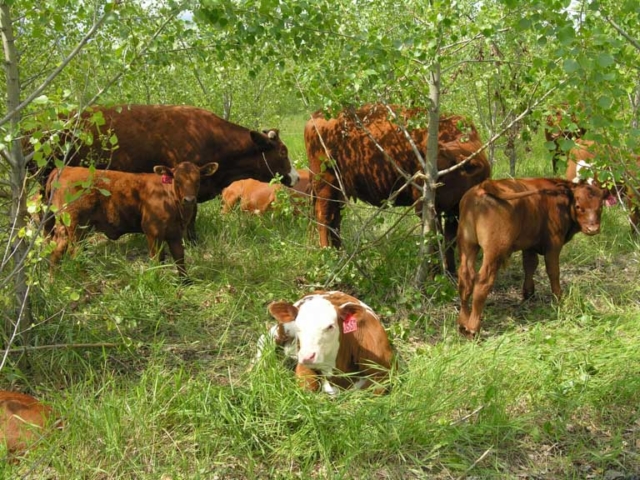Description / Details
Chokecherry (Prunus virginiana)
Chokecherry is a tough and fast growing tall shrub that suckers readily. It produces best in the full sun, but can also grow well in partial shade. It is remarkably adaptable to most soil types and moisture regimes across the province, although it typically won’t be found in areas that are flooded annually.
Chokecherry’s flowers provide excellent nectar and pollen resources for pollinators, and it produced copious amounts of fruits — the most of any native plant on the prairies! These fruits are much beloved by birds, and many humans as well. Chokecherry has long been and continues to be a staple for many Indigenous peoples, who grind up the fruits and pits, dry them, and incorporate them into pemmican and other dishes. Other peoples — particularly European settlers and their descendants — prefer to strain out the pits and add sugar to make syrups, jellies, or wines. Chokecherry leaves and bark are not recommended as forage, as they are toxic for livestock if ingested in large enough quantities (typically this only occurs if other forage is scarce).
Chokecherry’s ability to sucker and its wildlife value make it a valuable and common addition to most Eco-Buffers across the province. It is also recommended for use in conventional shelterbelts, food forests, alley cropping systems, and the upland edges of riparian buffers.

